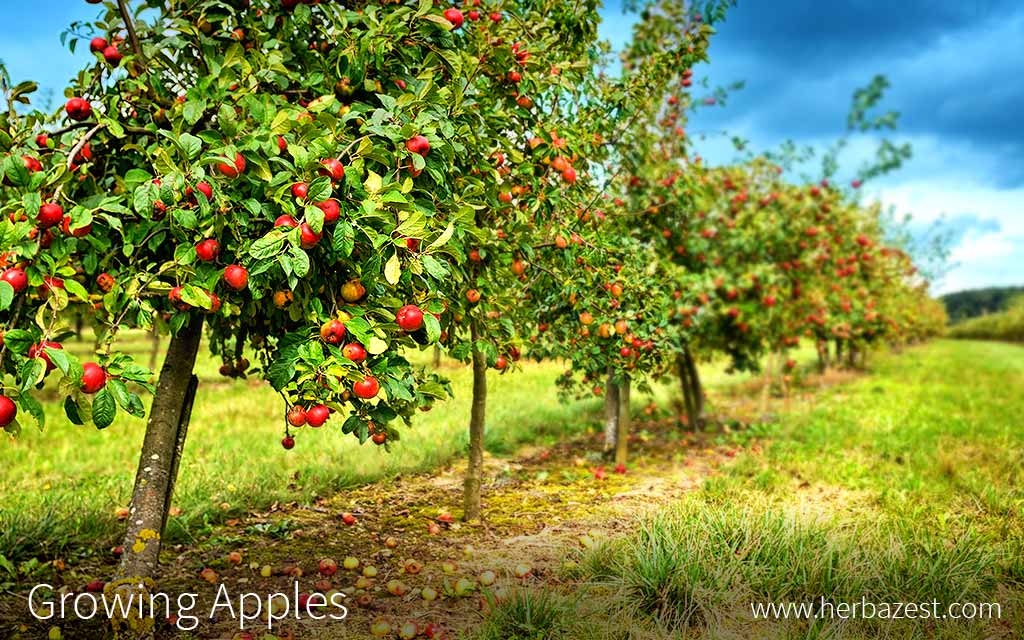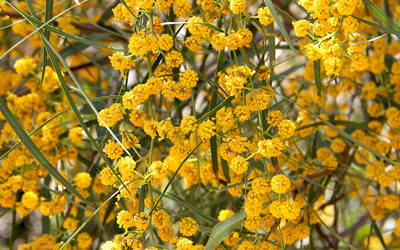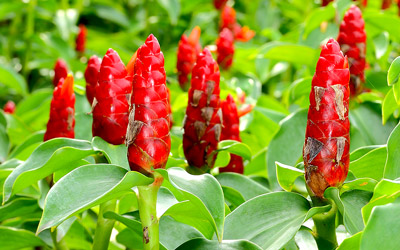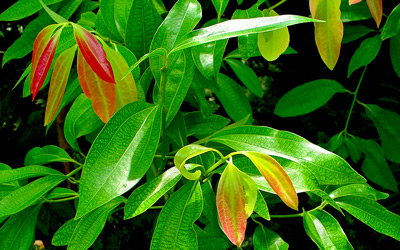A staple in almost every kitchen around the world, apples are enjoyed in a myriad of ways. While not everyone would think about growing them at home, given the appropriate conditions it is quite possible to cultivate these delicious fruits at small scale. These easy to follow growing guidelines will help you to successfully plant and take care of an apple three in your own garden.
1. Preparing the Soil
Before planting apple trees, you should first perform a soil test, which will provide you with valuable information about the nutrient content and soil pH and if any amendments are necessary prior to planting. Apple trees will flourish in a wide variety of soils as long as they are well-drained and nutrient-rich.
Choose a high site for planting your apple tree, preferably on a slope. That way, both excess water and cold air will flow down, away from the tree. It is important that you do not plant your apple tree in a low-lying area where cold air settles. This is called a “frost pocket” and may result in destroyed blossoms or fruit.
2. Planting
Planting Apples Outdoors
There are many ways to grow an apple tree. While sowing seeds seems to be the easiest way of propagation, the result is often uncertain, since the seeds carry genetic information of two different varieties. Apple seeds need to go through a stratification process that involves keeping them in moist conditions and subjecting them to a period of cold. Then, they are ready to be grown into a young tree that can be grafted with the desired apple variety.
Other propagation techniques include budding and layering, and are widely used for commercial purposes; however, since selecting the most suitable variety is crucial to success, most home gardeners find it more convenient to buy a one-year-old apple tree from a local nursery. The tree should be between four and six feet (1.0 - 1.8 m) tall and have a good root system.
It is best to plant apple trees in the early spring. For best results, soak the roots in water 24 hours prior to planting. To plant your apple tree, dig a two-foot (60-cm) deep hole approximately twice as wide as the root system. Loosen the soil of the walls and the bottom of the hole before spreading the roots, making sure that they are not too crowded. As you cover the roots with the soil, pat it down to remove air pockets. After the hole is filled, press the soil and water it well.
Apple trees do not fruit well on their own and will need a pollination partner, or cultivar, planted within 100 feet (30 m). For best results, plant a second apple tree nearby. Certain varieties of apple need three cultivars for successful pollination. Be sure to understand the cultivar needs of your apple tree before planting.
When choosing and planting your apple tree, keep in mind that while dwarf apple trees start bearing fruit two to three years after planting, a standard size apple tree can take up to eight years to bear fruit.
3. Plant Care
Watering
Be sure to water your apple tree thoroughly after planting. Once established, it will not need frequent watering. However, during drought periods, you may want to water trees that are already fruiting.
Fertilizing
You may wish to fertilize your apple tree immediately after planting. However, it is not recommended to apply fertilizer directly to the roots, as that may result in root burn. Since apple trees typically grow in nutrient-rich soils, they don't need to be fertilized frequently. Furthermore, over-fertilization may result in excess vegetative growth and reduced fruit production.
Pruning
In order to promote the health of your apple tree, it will be necessary to prune it every year, typically in late winter or early spring, after the coldest weather has passed and before new growth begins. When pruning, remove any diseased, dead, broken, or downward-growing branches. You should also remove any branches that are almost as wide in diameter as the trunk and any suckers that are growing from the roots or lower trunk.
When pruning apple trees, it is important to start by removing large limbs, working from the top of the tree down. Make cuts close to the branch collar at the base of the limb. Start each cut from the underside of the limb so as not to tear the bark.
Weed Control
Mulch around the base of your young apple trees with straw or woodchips in order to prevent the growth of weeds and grass. If you are planting your apple tree in a lawn, it is best to remove the turf surrounding the tree, as it will compete with the tree for water. For the first three to five years, grass should not be allowed to grow around the base of the apple tree, as it will quickly deplete soil moisture and hinder growth.
4. Pest & Disease Control
Pests
Among the most common pests that affect apple trees are the codling moth larvae, which bore into the fruit, causing wormy apples; apple maggots, which leave brown winding trails under the apple skin; and apple aphids, which feed on foliage and stems throughout the growing season.
Pesticides may be applied, but are not recommended. While lures and traps can be purchased to detect and reduce the number of insects, infestation can be controlled by introducing beneficial insects like ladybeetles and lacewings. Some varieties of apple trees are more pest-resistant than others, so be sure to do your research and choose trees that are suitable for your location. You should also pick up and destroy any fallen fruit regularly in order to reduce the incidence of infestation and prevent infestation the following year.
Voles and mice may chew on the trunks of apple trees throughout the winter when food is scarce. In order to protect your apple trees during the winter months, clear away vegetation and wrap hardware cloth around the base of the tree for protection.
Disease
Apple trees can be affected by a number of diseases. Apple scab attacks the leaves (causing defoliation in severe cases) and shoots and disfigures the fruit, while powdery mildew attacks the foliage and young shoots, and has a very marked effect on the yield and quality of the apple fruit. Additionally, apple canker causes branch and stem damage, and fire blight attacks the flowers, fruit, shoots, and branches of apple trees.
All these diseases are related to environmental conditions, especially the level of humidity, and some varieties are more susceptible than others. In order to prevent these common apple tree illnesses, make sure you choose a resistant variety; otherwise, apply fungicide early in the season.
An effective way to reduce the use of chemical sprays is constantly monitoring your apple tree. The introduction of beneficial insects may also help to lessen the amount of fungicides used to prevent and control these common apple diseases.
5. Harvest
Apples ripen at different times, depending on the variety and the climate in which they are grown. Typically, apples are harvested in the fall. As they mature, the skin of the apple will turn from green to yellow or red, and the flesh will lose its green tint and become yellow or white. However, some varieties - such as 'Granny Smith' - retain their green skin into maturation.
Ripe apples produce a hormone gas called ethylene. This gas works to loosen the fruit stem from the branch. Fruit that pulls away easily from the branch will be the ripest. Harvest your apples by hand, gently lifting and twisting the fruit, to avoid them falling to the ground and bruising.
6. Storage
Apples should be stored at 32°F (0°C) and at high humidity to maintain freshness. A good place to store apples is the crisper drawer of a refrigerator. However, it is important to keep apples away from vegetables during storage.





